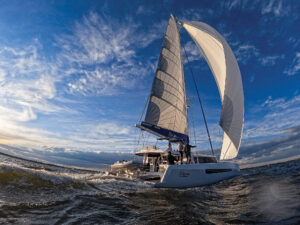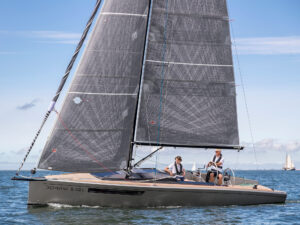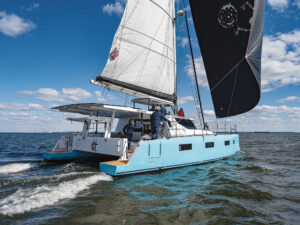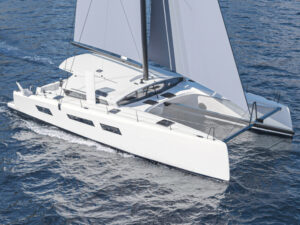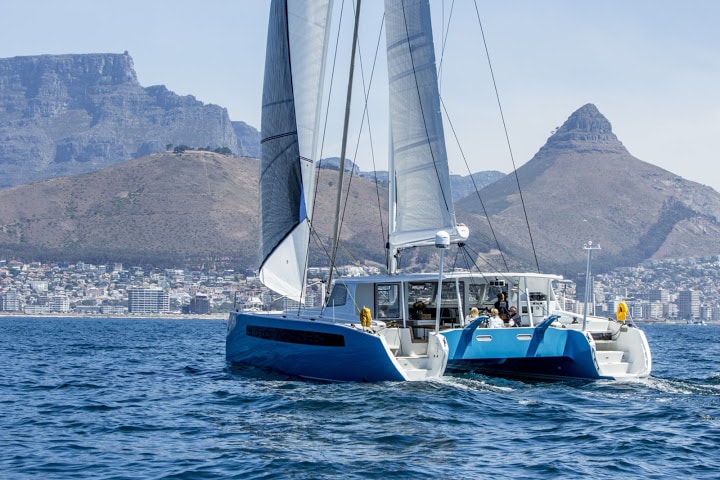
In the world of cruising catamarans, a debate has been raging for more than 20 years: Payload or performance? The palaver started in the mid-1990s, when cats began rolling out in increasing numbers for larger populations of sailors, including charterers. The boats were marketed on the basis of two mutually exclusive promises: their displacement-busting speed potential or their capacity to carry all the comforts of a well-appointed apartment. Sailors snarked about roomarans, the boats you might want to take anchoring but never sailing. At the other end of the cat spectrum were thoroughbreds marketed to couples but in fact sailed by pro crews.
The Balance 526 was forged in the smithy of this debate.
“We’re not creating a charter cat, and we’re not creating a racing cat,” says Phil Berman, owner of Balance Catamarans. “We’re creating a high-performance cruising cat for a couple to sail on.”
If the 526 isn’t the first model Berman created with those aims in mind, it is certainly the most successful.
What’s the secret in this boat? It starts with Berman’s build partners at Nexus Yachts (see “The Artisan Cat Builders of South Africa,” p. 82). Through a rare mix of world-class talent in building composite structures and labor rates that allow a builder to competitively market a 25,000-man-hour product, Nexus has created a beautiful vessel. The hull is a sandwich of fiber with a closed-cell foam core, bonded together using only epoxy resin — the best boatbuilding resin available. The fibers are E-glass with carbon reinforcement in the high-load areas, a good blend of cost containment and above-average strength-to-weight ratios. The cores are vacuum-bagged for thorough bonding, including in the interior bulkheads and furniture. Throughout the boat, fiber-to-resin ratios are artfully managed.
“Jonathan Paarman has a no-stainless fetish,” says Berman, referring to the chief laminator at Nexus Yachts. Handrails and posts for radar and antennas are all built from lightweight composites.
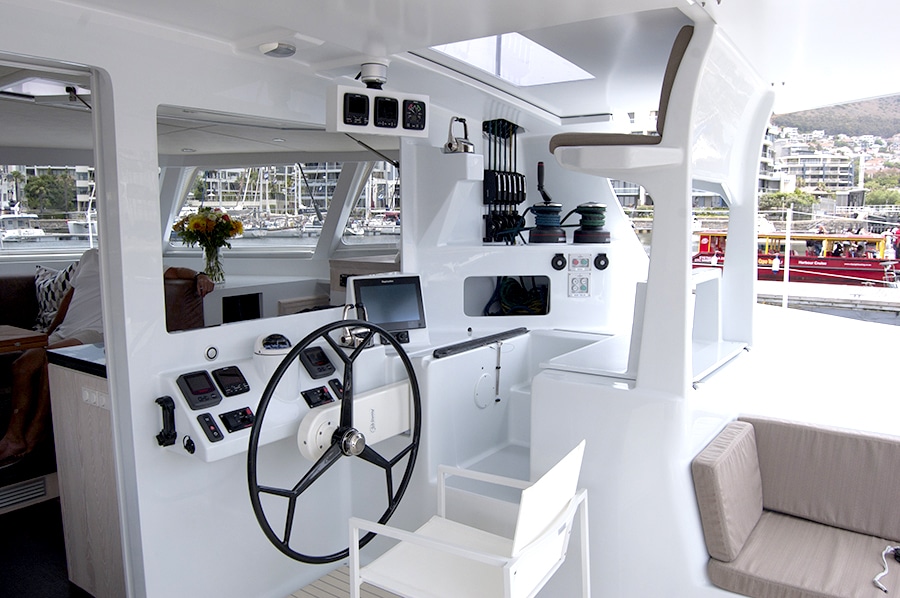
I sailed hull number one in Cape Town, South Africa, shortly after it launched. Even loaded for long fishing expeditions — including with a factory-installed ice flaker — this boat was a special pleasure to sail. The hull form features a reverse bow and scoop transom for a long waterline, but no chines or other tricks that add cabin volume at the cost of hydrodynamic flow. We sailed at 9.4 knots upwind in 11 knots of breeze; cracked off to 120 degrees apparent with a screacher up, we sailed at 12.3 knots.
The cabin designs are a result of hulls that were built for sailing. A head and massive stall shower occupy the aft end of the owner’s hull, while the master cabin lands near the hull’s centerline. A walk-around queen is placed athwartships and up on the bridgedeck. Guest accommodations are located in the port hull, with an athwartship bunk forward and an in-line berth in the aft cabin; a head and guest shower are located amidships.
The helm station features an articulating wheel pedestal. On some monohulls, we’ve seen this arrangement as an alternative to twin helms. On the 526, it allows the helmsman to steer from one of two positions at the aft end of the cabin bulkhead: either “up,” with full, direct visibility of the deck and sails, or “down,” on the cockpit sole with full weather protection and visibility through the cabin’s windows — which are made from tempered glass, not Lexan, which can craze over time.
Having joined the payload-versus-performance multihull debate for much of the past two decades myself, I stepped off the Balance 526 thinking it might just be the new scratch boat in that fight.
Tim Murphy is a CW editor-at-large and a longtime Boat of the Year judge.

